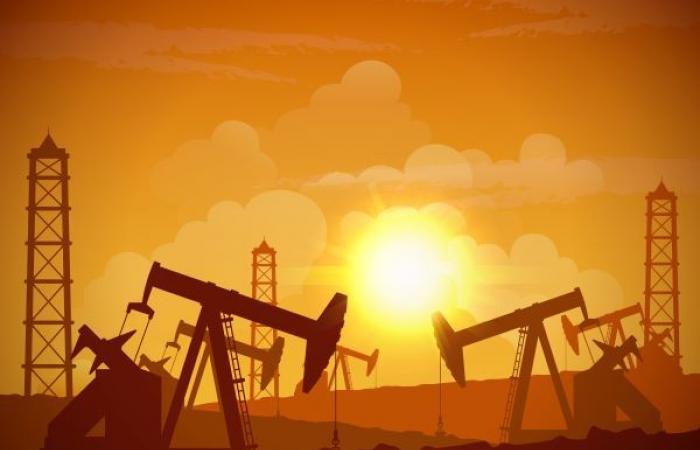Laure Pophillat
05/11/2024
Article updated on 05/11/2024
According to OPEC, the exit from fossil fuels is a “fantasy”. And if TotalEnergies seems to acquiesce, France is stubborn and confirms its objective of reducing its greenhouse gas emissions by 50%.
OPEC (Organization of Petroleum Exporting Countries) described the exit from fossil fuels as “a fantasy“, considering that the demand for black gold will continue to grow at least until 2050a symbolic milestone of the fight against climate change. TotalEnergies foresees a peak in the global oil consumption at best after 2030, in the most likely scenarios, according to its annual report on the evolution of the global energy system, published this Monday, November 4, one week before the COP29 climate conference. And during this time, France confirms its objective of reducing its gross greenhouse gas emissions by 2030 and aims to significantly reduce the share of fossil fuels (oil, gas and coal) in its final consumption by 2030, as announced by the Ministry of Ecological Transition Monday November 4.
Demand will increase until 2050
According to the 2024 edition of its global oil demand outlook reportOPEC sees demand increasing by 17% between 2023 and 2050, from 102.2 million barrels per day (mb/d) to 120.1 mb/d at the end of the period. The organization is revising its projection for 2045 significantly upwards, to 118.9 mb/d compared to 116 mb/d in the previous edition of its report. “These forecasts underline that the fantasy of the gradual exit of oil and gas does not conform to reality“, underlines the organization led by theSaudi Arabiavery critical of the rhythm of the energy transition. Among the main factors supporting this demand for oil and energy in general, theincrease in world populationwhich would increase from around 8 billion inhabitants today to 9.7 billion by 2050.
And this while last year, at the COP28 in Dubaithe world agreed to gradually abandon fossil fuels and, by 2030, triple the capacity of renewables, in order to reach the carbon neutrality in 2050in accordance with the recommendations of climate experts.
These forecasts go against the efforts required to limit global warming …And they are also significantly out of sync with the forecasts of the IEA (International Energy Agency), which anticipates a peak in demand for all fossil fuels “in the next few years” of the current decade, thanks to the leap in cleaner energy and electric cars.
The evolution of oil demand is heterogeneous, its growth being driven by countries outside the OECD, first and foremost India, which alone would see its demand grow by 8 mb/d over 2023-2050. © macrovector / Freepik
From a sector perspective, “The highest incremental demand during the forecast period is forecast for the petrochemical, road transport and aviation sectors“, indicates the report. Despite a rise in electric cars, OPEC estimates that thermal vehicles “expected to continue to dominate road transport“.
Same story (or almost) at TotalEnergies
The annual UN climate conference in Baku, Azerbaijan (from November 11 to 22, 2024) must conclude with a new objective of financial aid to developing countries, so that they can reduce their emissions of greenhouse gas and adapt to climate change caused by the fossil fuels.
TotalEnergies, the fourth largest oil and gas major in the world she also wanted to unfold her vision for the energy of tomorrow. For its sixth edition, its report examines the prospects for the evolution of the global energy system according to three possible decarbonization scenarios by 2050:
– the first, based on current policies and the second, intermediate, both lead to a rise in global temperature well beyond 2 degrees from thepre-industrial era. However, in its base scenario, TotalEnergies therefore foresees a peak in the oil demand “rather around 2035“, followed by a high plateau and a “very slow decline“, thus getting closer to OPEC forecasts;
– In the intermediate scenario, the peak would occur “just after 2030“, followed by a plateau, and a decline”a little more marked“with a request of the order of”65 million barrels per day in 2050” ;
– Only the third scenario, called “rupture“, is aligned with the Paris agreementsthat is to say allowing the achievement of a rising temperatures to less than 2 degrees by 2100, with oil consumption falling to 44 million barrels per day in 2050.
Whatever the scenarios, TotalEnergies expects an increase in gas demand at least until 2030, or even beyond 2040 depending on the scenarios, an energy that he considers inevitable to compensate for the intermittency of wind and solar energy and for “decarbonize“electricity. A gas-fired power plant releases about half as much CO2 into the atmosphere as coal-fired power plants. However, the latter still represented 74% of the electricity produced in the world in 2022.
France confirms its objective of reducing its gross greenhouse gas emissions by 50% by 2030
For its part, France intends to meet its objectives at all costs, specifying that the share of fossils in its final consumption will increase from 60% in 2022 to 42% in 2030, according to the PPE (Multi-year Energy Programming), roadmap of the French energy policy over the next ten years, and the SNBC (National Low-Carbon Strategy).
To get out of fossil fuelsFrance will have to consume more electricity: the share of electricity (essentially decarbonized in France due to its nuclear power) in final energy consumption will thus evolve in the opposite direction, going from:
– 27% in 2022,
– 34% in 2030,
– and 39% in 2035.
These two texts de facto confirm the launch of a program for the construction of new generation nuclear reactors (EPR2) and recovery of the availability of the existing fleet in order to reach a production level of at least 360 TWh/year, compared to 320 .4 TWh in 2023 and 279 TWh in 2022.
THE renewable energies will play a predominant role in this perspective of decarbonization, notably with a multiplication up to six times of the installed power of photovoltaic energy in 2022.The objective is to increase the rate of solar development to at least 5.5 GW/year, compared to 3 GW/year in the previous PPE.“, specifies the text. It will be the same with theonshore wind powerand the objective of installing 1.5 GW of additional capacity each year. This rate would allow the doubling of the current fleet by 2035, to 40 GW of installed power compared to 21 GW in 2022. Finally, for offshore wind power, the government confirms the production objective of 18 gigawatts (GW) in 2035 , “i.e. more than 10% of carbon-free electricity production” of the country, compared to 1.5 GW today.
Source : batirama.com / AFP / Laure Pophillat







